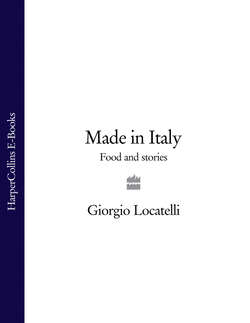Читать книгу Made in Italy: Food and Stories - Giorgio Locatelli - Страница 13
Insalate e condimenti Salads and dressings
ОглавлениеAt home in Corgeno I don’t remember my grandmother ever making a salad that was a dish in its own right, or had any sophistication, but salads have become an important part of the way we eat now. As with all our dishes in the restaurant, we look to classic Italian combinations of ingredients and flavours for our inspiration. What is exciting is to play with whatever is in season and what is good from the market: porcini mushrooms in autumn, root vegetables in winter, asparagus in spring, tomatoes in summer.
Like any other dish, a good salad needs structure – different textures, such as something soft, something with a little crunch. Throw in some pomegranate seeds and people think you have done something fantastic. Italians often find it difficult to put fruit in salad, but a chef who has been a real inspiration to me is David Thompson at Nahm, such a clever man – I really like what he does with Thai food. I came up with the idea of putting pomegranate into a winter salad after eating at Nahm, and having a brilliant salty-sweet warm salad, layered up with leaves and peanuts and fruit such as mango and papaya – almost like a lasagne.
When we eat, we experience taste sensations in different parts of the mouth: sweet, sour, salty, bitter – and the most recently recognized, umami. Think about balancing ingredients that satisfy all these tastes, so that when you eat the salad it fills your whole mouth with flavour. A tomato can give sweetness; maybe you want something peppery, like rocket, or something aniseed, like raw fennel, which is so underused in salads in the UK. And remember that salad leaves all have different flavours and textures, so it is good to include a mixture.
I don’t like to see ready-prepared salads and vegetables in supermarkets, though – all those bags of mixed leaves, looking perfect thanks to a little cocktail of pesticides and kept going in their ‘modified-atmosphere’ bags, alongside packets of ready-podded peas, and beans with their tops and tails cut off. Vegetables and leaves begin to lose some of their nutrients, especially vitamin C, the moment they are plucked or cut up, so who knows what value is left in pre-packaged ones by the time they reach your plate?
I know not many of us are lucky enough to do what my grandmother did and just go out into the garden and pick a few heads of this and a head of that, depending on what my grandfather had planted. But I would far rather buy a variety of different salads in their entirety at a farmers’ market, from someone I know doesn’t use chemicals, and mix them myself. What I get especially mad about are those bags of Cos lettuce with their little packets of ingredients ready to make Caesar salad. If you simply buy a head of lettuce, make up a vinaigrette and grate in some cheese, you achieve double the quality at half the price.
If you are serving salad leaves with hot ingredients – for example, seared scallops or grilled porcini mushrooms – try to use the more robust leaves, such as wild rocket, which will not ‘cook’ and wilt too quickly. And if you are serving your salad on individual plates and want it to look good, arrange the heavier ingredients on the plates first, then the lighter ones, such as leaves, on top.
Finally, you need careful seasoning and a good vinaigrette or other dressing to pull all the different elements together. Again, I love the way Thai people make dressings out of crushed peanuts, fish sauce and lime juice to bring everything together. That is what we are aiming at – to transform an assembly of ingredients into something exciting.
